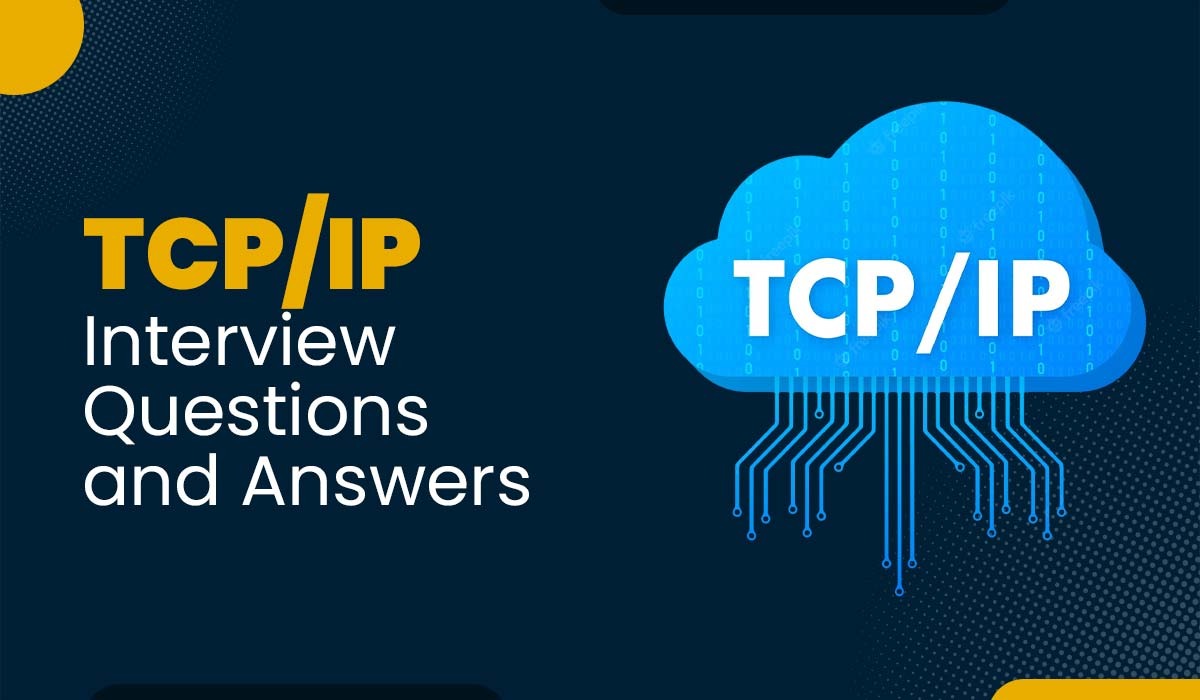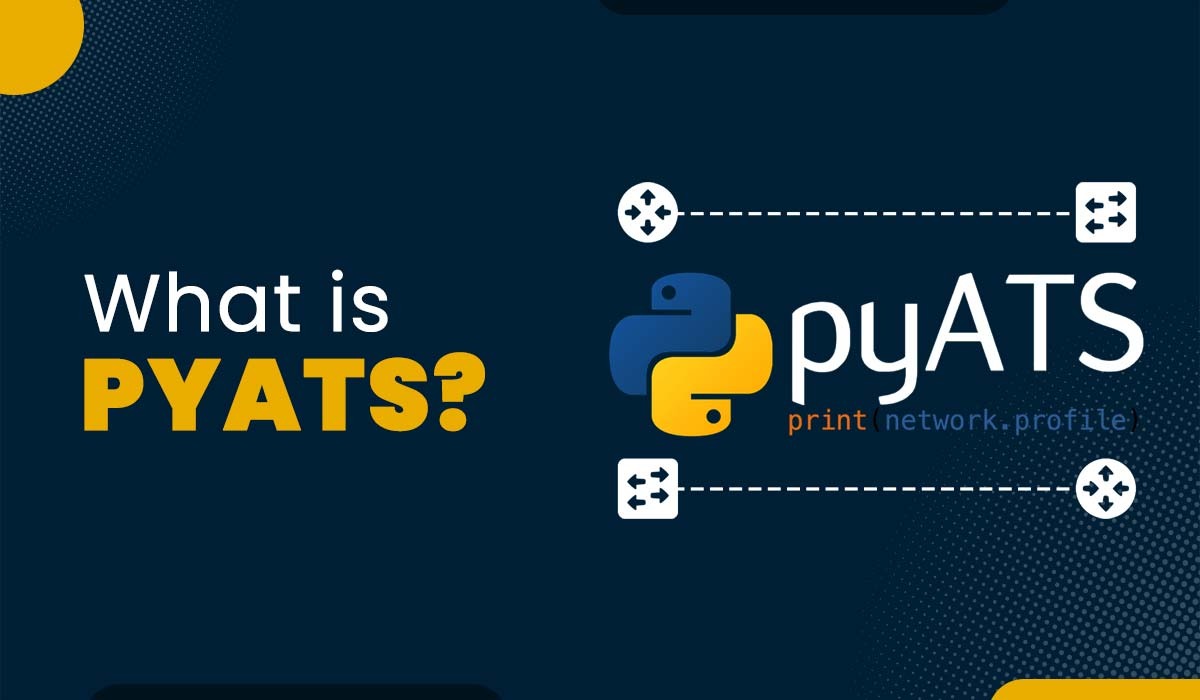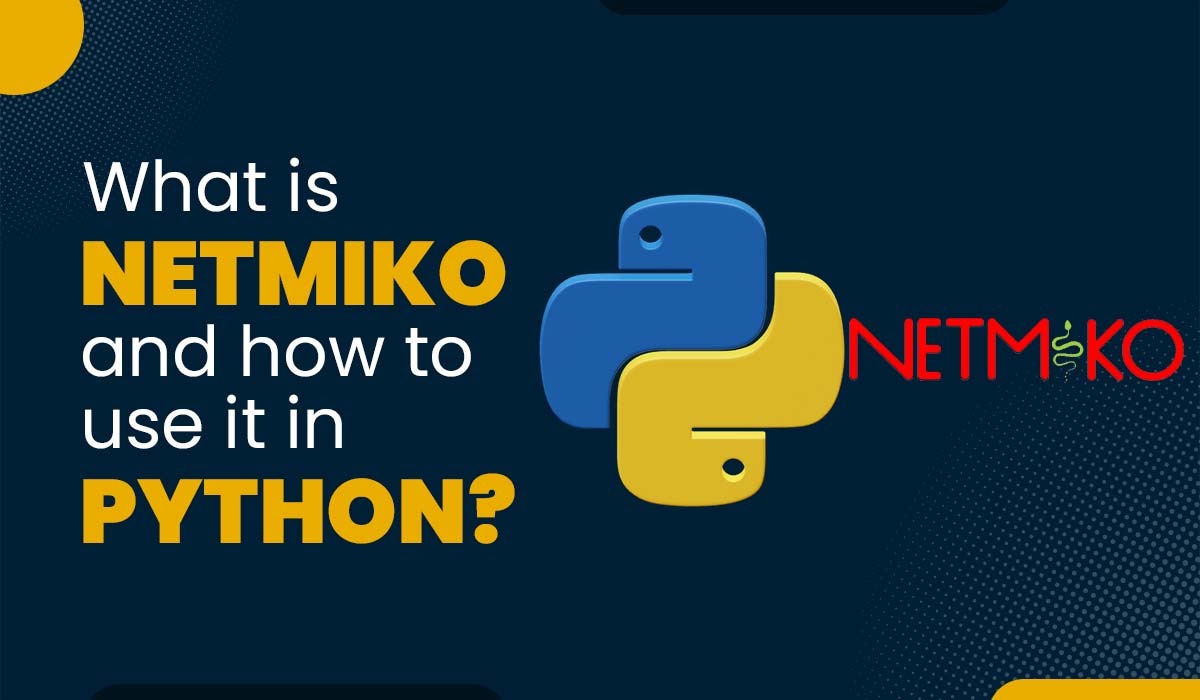TCP/IP Interview Questions and Answers

TCP/IP stands for Transmission Control Protocol/Internet Protocol, which is a set of rules that governs how data is transmitted and received over a network. It is one of the most widely used protocols that allows communication between different devices across various networks. Jobs in this field often need a thorough understanding of TCP/IP. In order to help you effectively prepare for future interviews, we have handpicked the most frequently asked TCP/IP interview questions and answers. TCP/IP stands for Transmission Control Protocol/Internet Protocol, is a fundamental communication protocol suite used for transmitting data over networks, most notably the internet. It provides a standardized set of rules and conventions that govern the exchange of information between devices and systems. TCP is responsible for ensuring reliable and error-free data transmission by breaking data into packets and reassembling them at the destination. Whereas, IP handles the addressing and routing of data packets across the network. Together, TCP/IP forms the backbone of the internet and is widely used in local area networks (LANs) and wide area networks (WANs) to enable seamless communication between computers, servers, and other networked devices. Now that we have an overview of TCP/IP, let’s begin with basic TCP/IP interview questions in the first phase and will focus on the TCP/IP interview questions and answers for experienced candidates afterward. Transmission Control Protocol/Internet Protocol is the full name for TCP/IP. IP is the foundation of the Internet, delivering packets from their origin to their final destination and serving as the address system for all devices communicating over it. TCP is necessary since IP does not handle error checking or packet ordering. TCP is in charge of gathering the packets and putting them together in the correct sequence, while IP delivers the information or packets to the correct location. TCP/IP architecture consists of four layers, these are: TCP and UDP are two of the most widely used protocols on the internet. They both allow the transmission of data from a source to a destination, but they have different characteristics and features. Below we have summarized the basic difference in a tabular form. Connecting two networked devices is the main purpose of a TCP/IP handshake. It’s like a handshake between two people; only it includes two gadgets exchanging messages with one another. The TCP/IP handshake is a crucial element of the TCP/IP protocol required to establish communication between the two devices. Each device on a network has a numerical address that is assigned by a method known as IP addressing. It is divided into two parts, i.e., Network ID and Host ID. IP addresses are further divided into five parts: A, B, C, D, and E. Each class has different values and ranges for the Network ID and Host ID. Below we have shown it with the help of a table for better understanding. Socket allows when two different processes want to communicate on the same or different machines. It is identified by a combination of a port number and an IP address that further specify the device and the application that is communicating. The socket allows the identification of the destination application for data transmission by utilizing the IP address and port number. Both Flow control and error control techniques are used in data communication for reliable transmission of information. When we talk about flow control, it regulates the amount of data that the sender can send to the receiver in a way that does not cause any burden to the receiver. Whereas error control detects and rectifies any errors that might occur during the transmission process. Below we have summarized the basic difference between flow control and error control in a tabular form. In network communication, the IP datagram acts as a fundamental unit of information. It works in the network layer of the TCP/IP protocol stack. Every IP datagram consists of two main components: a header and a payload. The header includes essential metadata, including the source and destination IP addresses, the version of the IP protocol employed (IPv4 or IPv6), and additional control information. PING stands for Packet Internet Network Gopher. In a computer network, a ping is a simple Internet software that can test and validate whether or not a given destination IP address exists and can receive requests. Ping is also used to measure and evaluate the speed at which information is sent from one location (such as a computer) to another (such as a website). Ping may also be used to test connections, troubleshoot problems, and measure response times. Ping uses Internet Control Management Protocol (ICMP). Private IP addresses are commonly used for the purpose of establishing network connectivity within enterprises, offices, or home networks. Devices such as printers, smartphones, computers, and tablets that are connected to an internet network are assigned private IP addresses. One of the key reasons private IP addresses were formed was to allow routers and devices to uniquely identify one other. Class A, Class B, and Class C are classified as private IP addresses. We have already discussed these classes above. Now, we have listed the TCP/IP interview questions for beginners. Let’s now move on to interview questions for experienced candidates. Here are the top TCP/IP Interview Questions and Answers for experienced – TCP flags are used to identify a specific connection status or to offer extra information inside TCP packet transmissions. As a result, they may be used for troubleshooting or to regulate how a specific connection is handled. There are six types of TCP flags: There are five classes of IP addresses: A, B, C, D, and E. Every class has different range values and is used for different purposes. Out of five classes, the most used IP address class is class C, specifically designed for small networks such as small businesses or household networks. Now, why the Class C addresses are mostly used? This is because it can support up to 254 hosts; hence the wastage of IPs is significantly less as compared to others. It is mainly utilized for home or office networks, allowing easy subnetting and address allocation. ARP stands for Address Resolution Protocol, which is used in TCP/IP networks. ARP is used when a device knows the IP address of another device but doesn’t know the Mac address. At this point, ARP starts sending a request message (asking for the MAC address with a specified IP address) to all the devices that are connected to the network. At last, when the device that matches the IP address responds with its MAC address and further can easily communicate with it. The main purpose of ARP is to map an IP address to a physical machine address, specifically a MAC address. Here are some of the measures one can take to secure a TCP/IP network: TCP tries to avoid network meltdown by adjusting its sending rate according to the feedback from the receiver and the network. TCP uses a mechanism called “congestion avoidance” and “Slow Start” algorithms that are defined in RFC 2001. These are mainly to reduce the data amount that is sent over a network. This further helps in reducing network congestion. “Nagle algorithm”, helps the client side of TCP from overwhelming the network with lots of small frames, defined in RFC 896. Apart from the abovementioned algorithms, it also mandates “Silly Window Syndrome” An undesirable circumstance in which the transmitter and the recipient only exchange extremely little pieces of data. SWS is defined in RFC 813. Below we have explained the basic steps one can take to configure a TCP/IP network: These are the top TCP/IP Interview Questions and Answers for experienced. TCP/IP is a fundamental topic for anyone who wants to pursue a career in networking or related fields. In this blog, we have covered TCP/IP interview questions and answers for both beginners as well for experienced candidates. We hope that this post has helped you refresh your knowledge of TCP/IP concepts, principles, and applications, and prepare you for your next interview. You can also check out – Basic Networking Interview QuestionsIntroduction
About TCP/IP
TCP/IP Interview Questions and Answers for Beginners
Q1 – What is TCP/IP?
Q2 – How many layers does TCP/IP have, and what are they?
Q3 – What is the difference between TCP and UDP?
Factors TCP (Transmission Control Protocol) UDP (User Datagram Protocol) Reliability Reliable Unreliable Speed Slower than UDP Faster than TCP Connection Connection-oriented Connectionless Acknowledgment Yes No Flow Control Yes No Congestion Control Yes No Data Delivery Ordered and Complete Unordered and Incomplete Usage Web browsing, file transfer, email, etc. Streaming, gaming, voice-over IP, etc. Q4 – What is the purpose of the TCP/IP handshake?
Q5 – What are some of the common IP addressing classes and their ranges?
Class Network ID Host ID Range A 8 Bits 24 Bits 1.0.0.0 to 126.255.255.255 B 16 Bits 16 Bits 128.0.0.0 to 191.255.255.255 C 24 Bits 8 Bits 192.0.0.0 to 223.255.255.255 D N/A N/A 224.0.0.0 to 239.255.255.255 E N/A N/A 240.0.0.0 to 255.255.255.255 Q6 – What is a Socket?
Q7 – What is the difference between flow control and error control?
Factors Flow Control Error Control Purpose To prevent data loss due to buffer overflow at the receiver To ensure data integrity by detecting and rectifying errors Method By using feedback messages such as acknowledgments and window sizes By using error detection codes such as parity bits and checksums Direction Usually, bidirectional Usually, unidirectional Overhead Low, as only a few bits are added to each frame or segment High, as extra bits are added to each frame or packet Q8 – What is IP datagram?
Q9 – What is PING and what protocol is used by it?
Q10 – What is a Private IP address?
TCP/IP Interview Questions and Answers for Experienced
Q11 – What are TCP Flags and their types?
Q12 – Which IP address class is mostly used and why?
Q13 – What is the purpose of ARP?
Q14 – How do you secure a TCP/IP network?
Q15 – Explain how does TCP try to avoid network meltdown?
Q16 – How do you configure a TCP/IP network?
Conclusion







